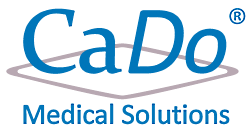When long-term urinary catheters are necessary for urine drainage in specialized care situations, catheter blockages often occur as a result of encrustations. Subsequently, urinary retention causes acute pain for the affected patients. Even worse, serious complications such as sepsis and kidney failure may be possible consequences. Occasionally, the catheter can be flushed with salines successfully. In most cases, however, an immediate change of the blocked catheter is needed. Especially at night and on weekends, there is a lack of trained personnel in nursing homes or home care situations for replacing the catheter. Moreover, in some countries suprapubic catheters may only be replaced by medical doctors themselves or under their supervision.

Consequently, a patient transportation to emergency units is necessary. This means inconvenience and risks associated with a delayed treatment for the patients, who often are demented and helpless. Additionally, high costs for transportation procedures and emergency treatment may be a logical consequence.
With the innovative CADO system, a standardized and safe procedure for removal of catheter blockages at bed side is now available. The application is simple and smart. After completing an online tutorial, the catheter cleaning procedure can be carried out easily by relatives and nursing staff.
